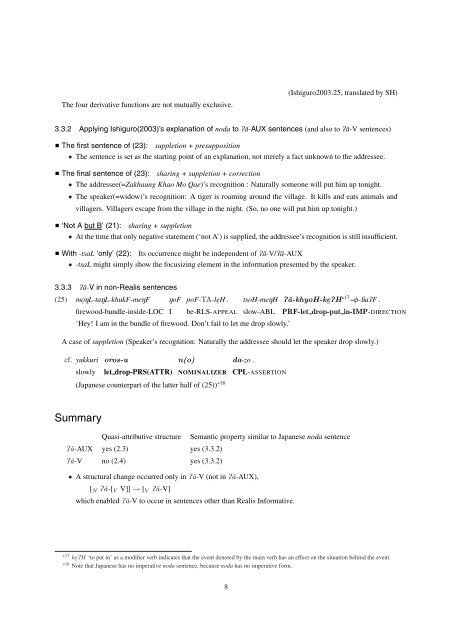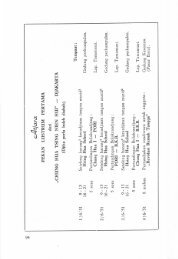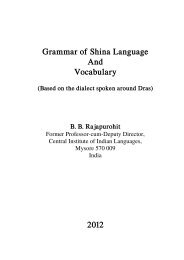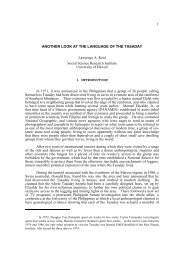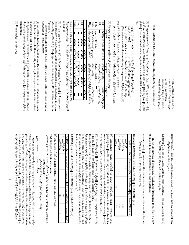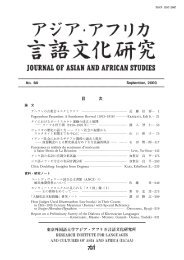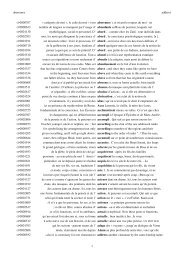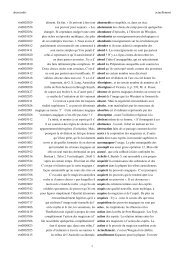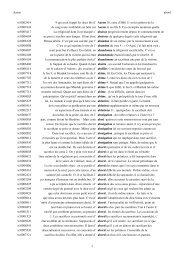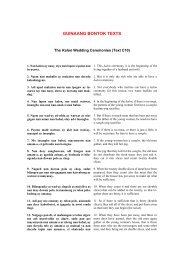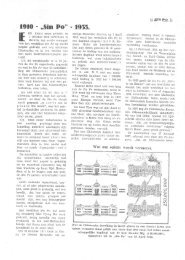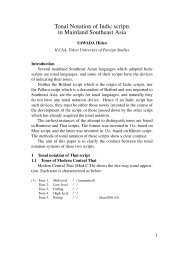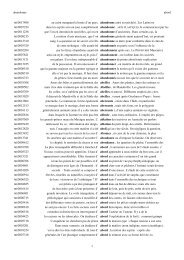PËa-prefixation on verbs and auxiliaries in Lhaovo (Maru) Language ...
PËa-prefixation on verbs and auxiliaries in Lhaovo (Maru) Language ...
PËa-prefixation on verbs and auxiliaries in Lhaovo (Maru) Language ...
Create successful ePaper yourself
Turn your PDF publications into a flip-book with our unique Google optimized e-Paper software.
The four derivative functi<strong>on</strong>s are not mutually exclusive.<br />
(Ishiguro2003:25, translated by SH)<br />
3.3.2 Apply<strong>in</strong>g Ishiguro(2003)’s explanati<strong>on</strong> of noda to Pă-AUX sentences (<strong>and</strong> also to Pă-V sentences)<br />
The first sentence of (23): suppleti<strong>on</strong> + presuppositi<strong>on</strong><br />
• The sentence is set as the start<strong>in</strong>g po<strong>in</strong>t of an explanati<strong>on</strong>, not merely a fact unknown to the addressee.<br />
The f<strong>in</strong>al sentence of (23): shar<strong>in</strong>g + suppleti<strong>on</strong> + correcti<strong>on</strong><br />
• The addressee(=Zakhaung Khao Mo Qae)’s recogniti<strong>on</strong> : Naturally some<strong>on</strong>e will put him up t<strong>on</strong>ight.<br />
• The speaker(=widow)’s recogniti<strong>on</strong>: A tiger is roam<strong>in</strong>g around the village. It kills <strong>and</strong> eats animals <strong>and</strong><br />
villagers. Villagers escape from the village <strong>in</strong> the night. (So, no <strong>on</strong>e will put him up t<strong>on</strong>ight.)<br />
‘Not A but B’ (21): shar<strong>in</strong>g + suppleti<strong>on</strong><br />
• At the time that <strong>on</strong>ly negative statement (‘not A’) is supplied, the addressee’s recogniti<strong>on</strong> is still <strong>in</strong>sufficient.<br />
With -tsaL ‘<strong>on</strong>ly’ (22): Its occurrence might be <strong>in</strong>dependent of Pă-V/Pă-AUX<br />
• -tsaL might simply show the focusiz<strong>in</strong>g element <strong>in</strong> the <strong>in</strong>formati<strong>on</strong> presented by the speaker.<br />
3.3.3 Pă-V <strong>in</strong> n<strong>on</strong>-Realis sentences<br />
(25) mōNL-taNL-khukF-meNF<br />
firewood-bundle-<strong>in</strong>side-LOC<br />
NoF<br />
I<br />
poF-TA-lēH .<br />
be-RLS-APPEAL<br />
tsoH-meNH<br />
slow-ABL<br />
Pă-khyoH-kēPH * 17 -φ-HaPF .<br />
PRF-let drop-put <strong>in</strong>-IMP-DIRECTION<br />
‘Hey! I am <strong>in</strong> the bundle of firewood. D<strong>on</strong>’t fail to let me drop slowly.’<br />
A case of suppleti<strong>on</strong> (Speaker’s recogniti<strong>on</strong>: Naturally the addressee should let the speaker drop slowly.)<br />
cf. yukkuri<br />
slowly<br />
oros-u<br />
let drop-PRS(ATTR)<br />
n(o)<br />
NOMINALIZER<br />
(Japanese counterpart of the latter half of (25)) * 18<br />
da-zo .<br />
CPL-ASSERTION<br />
Summary<br />
Quasi-attributive structure Semantic property similar to Japanese noda sentence<br />
Pă-AUX yes (2.3) yes (3.3.2)<br />
Pă-V no (2.4) yes (3.3.2)<br />
• A structural change occurred <strong>on</strong>ly <strong>in</strong> Pă-V (not <strong>in</strong> Pă-AUX),<br />
[ N Pă-[ V V]] → [ V Pă-V]<br />
which enabled Pă-V to occur <strong>in</strong> sentences other than Realis Informative.<br />
*17 kēPH ‘to put <strong>in</strong>’ as a modifier verb <strong>in</strong>dicates that the event denoted by the ma<strong>in</strong> verb has an effect <strong>on</strong> the situati<strong>on</strong> beh<strong>in</strong>d the event.<br />
*18 Note that Japanese has no imperative noda sentence, because noda has no imperative form.<br />
8


